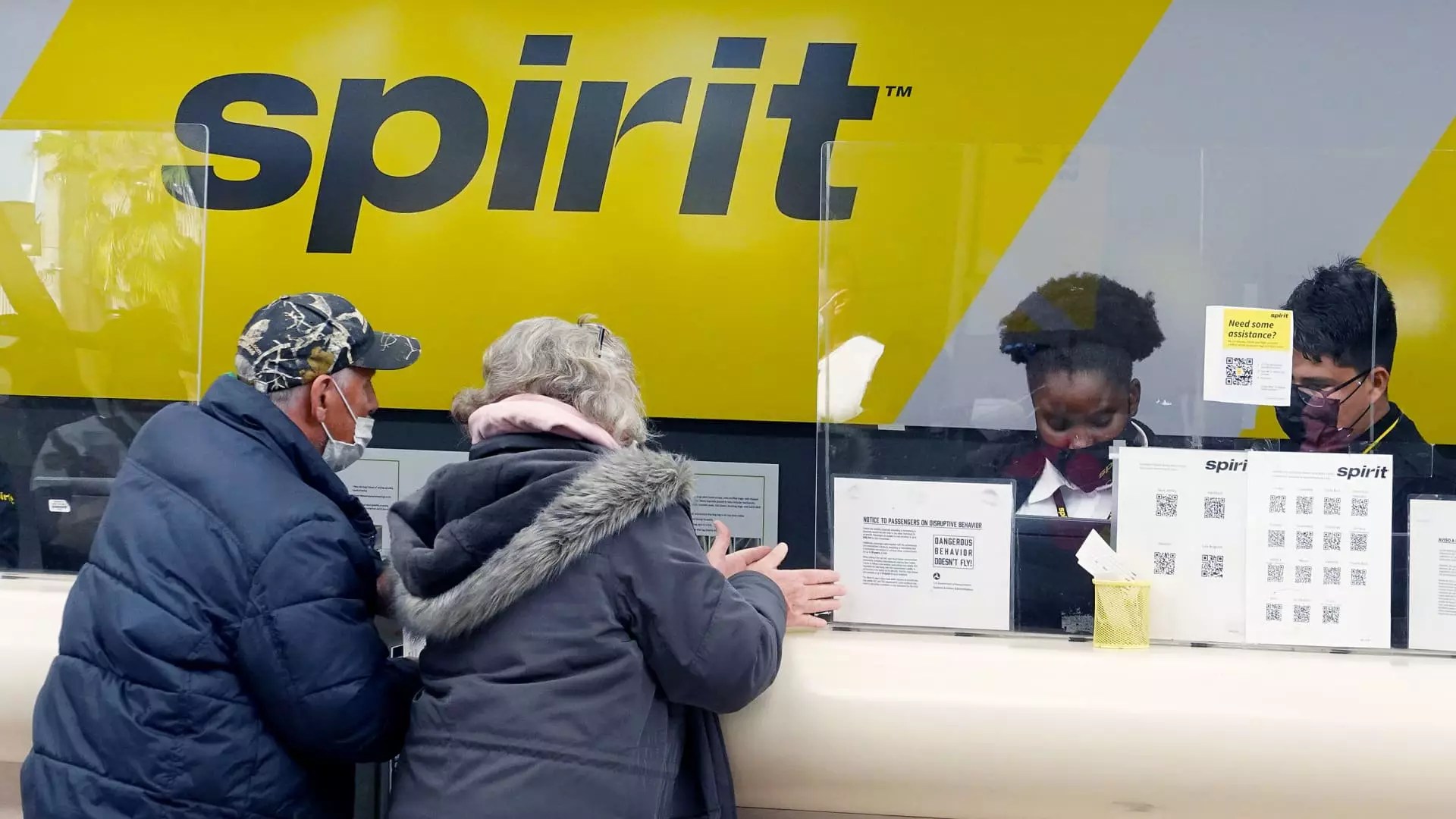Spirit Airlines, once lauded for its disruptive business model that redefined budget air travel, is facing the repercussions of a tumultuous journey resulting in bankruptcy protection. The airline, headquartered in Dania Beach, Florida, has experienced mounting financial burdens including unsuccessful mergers and changing consumer preferences. File for Chapter 11 bankruptcy was an unavoidable strategy for Spirit as it attempts to restructure and rebound from plummeting revenues and increasing operational costs.
The bankruptcy filing comes with a prearranged agreement with bondholders, providing Spirit with $300 million in debtor-in-possession financing. This funding is pivotal, granting the airline breathing room as they navigate through this transitional period. Many key stakeholders including vendors and aircraft lessors are expected to remain unharmed, and Spirit has confidently reassured customers that operations will continue as usual, even encouraging them to book flights during the upcoming holiday season.
In recent times, Spirit’s operational difficulties have been stark, especially after a major engine recall that grounded numerous aircraft. This issue was compounded by soaring post-pandemic costs, leading to a staggering loss of over $335 million in the first half of the year alone. Additionally, the failed acquisition attempts by JetBlue Airways only exacerbated the airline’s plight, with antitrust concerns blocking the potential merger just as it had begun to show promise.
Spirit’s stock performance mirrored its financial woes, with shares witnessing a drastic decline of more than 90% in 2023. Alongside this, the airline faced a challenging deadline regarding a monumental $1.1 billion debt, creating a dire need to renegotiate terms with creditors. The recent restructuring deals aim to convert approximately $795 million of existing debt into equity, a move expected to stabilize the airline financially.
An essential aspect of Spirit’s turnaround plan focuses on efficiency improvements and cost management. As part of this strategy, the airline is preparing to reduce its workforce further by furloughing an additional 330 pilots starting in January, which adds to previously planned reductions. Furthermore, Spirit has sold off a significant number of aircraft, including 23 Airbus planes, to enhance cash flow in an environment where plane shortages have ironically raised values. This sale generated $519 million, a much-needed financial cushion.
In light of competitive pressures, Spirit has been revising its service offerings. Historically criticized for its a la carte pricing strategy, the airline has recently rolled out new bundled fare options that provide customers with additional benefits, such as seat assignments and perks. This adjustment is aligned with an evolving market where travelers are increasingly willing to pay more for specific preferences in seating and service quality.
Despite the adversity, Spirit Airlines retains a dedicated customer base that appreciates its low-cost model, though it often becomes the butt of jokes in popular culture. The airline’s branding has thrived on its reputation for low fares, although the service level associated with such prices led to a mixed reception. The public’s affection for Spirit may well be tested as the airline undergoes significant changes to restore profitability while maintaining its core audience.
The disruption caused by the pandemic also played a pivotal role, shifting consumer travel habits and preferences. As more travelers began opting for other airlines with more extensive networks and service options, Spirit’s positioning suffered. Consequently, adapting to these shifts will be critical for Spirit’s survival in the long term.
While recovery from bankruptcy presents a formidable challenge, there is cautious optimism surrounding the potential for Spirit Airlines to emerge as a financially rehabilitated entity. Analysts posit that a possible rekindling of discussions with Frontier Airlines regarding a merger could be on the horizon, providing new strategies for competition in the highly concentrated airline market.
Spirit Airlines’ journey through bankruptcy protection is emblematic of the volatility and unpredictability of the airline industry. However, the company’s willingness to adapt and restructure may ultimately pave the way for a revival. With astute management and a responsive approach to consumer needs, Spirit could very well take flight once more, reaffirming its role as a significant player in the aviation market.


Leave a Reply